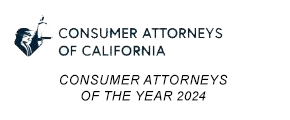Hale, et al. v. State Farm, No. 3:12-cv-00660 (S.D. Illinois) began over 20 years ago with a class action suit by State Farm insureds alleging State Farm wrongly replaced their post-accident vehicle parts with non-OEM in violation of the terms of their insurance policies. In 1999, an Illinois state court jury awarded plaintiffs $456 million for breach of contract by the company, and the trial judge added $730 million in punitive damages. An appellate court reduced the verdict to $1.056 billion, at that time one of the largest class-action verdicts in U.S. history.
While the case was pending in the Illinois Supreme Court, a vacancy opened on the Court and State Farm sought to fill that seat with a justice sympathetic to its views. State Farm’s preferred candidate, Lloyd Karmeier, then a little-known trial judge, was ultimately elected in a very costly race. It emerged that State Farm funneled upwards of $3.5 million to the Karmeier campaign, sending the funds to other entities such as the US Chamber of Commerce, which then forwarded the monies to the Karmeier campaign. Plaintiffs sought to recuse Justice Karmeier from hearing the case, and, in response, State Farm denied that it gave Justice Karmeier monies either directly or indirectly. Justice Karmeier did not recuse himself and, according to a timeline his office prepared, he “broke the deadlock” at the Supreme Court, reversing the $1 billion dollar judgment against State Farm.
In 2012, Plaintiffs filed a new complaint alleging a RICO conspiracy, that State Farm selected Karmeier to run for the seat and funneled monies to his campaign in such a way that it could later deny that it had done so, used the mails to advance its fraudulent scheme, and ultimately succeeded in having the Supreme Court overturn the judgment. It took years for Plaintiffs to fully understand the money trail and develop its case for trial.
The case involved three trips to the Seventh Circuit Court of Appeals, rulings on class certification, two summary judgment motions, dozens of motions in limine and Rule 702 motions, the production and review of hundreds of thousands of pages of documents, upwards of 100 depositions, and only settled, on September 4, 2018, after the jury had been empanelled. The case settled for $250 million. Had the negotiations not proven successful, and had the Court not granted preliminary approval to the settlement that same day, the jury would have returned the following day to begin hearing testimony.
Contact us
Use the form below to contact a lawyer at Lieff Cabraser.













